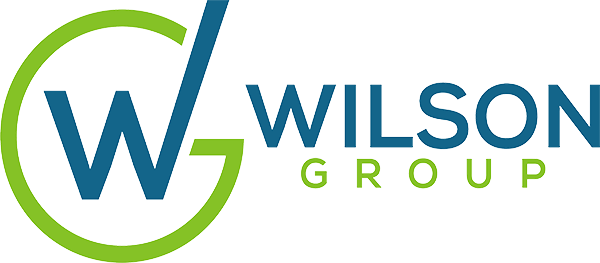Job descriptions are an essential part of hiring and managing your employees. Written summaries of your jobs ensure applicants and employees understand their roles and are accountable to the organization.
Job descriptions also:
- Serve as the foundation for creating job postings to attract the right job candidates
- Describe the major areas of an employee’s job or position
- Serve as a basis for outlining performance expectations, job training, job evaluation and career advancement
- Provide a reference point for compensation decisions and fair hiring practices
- Help limit the Company’s legal exposure, including new Equal Pay laws
- Provide important details for worker’s compensation and disability claims
Updating job descriptions on a regular basis
It is recommended that job descriptions be updated every two years to ensure the content of the job is accurately captured. Job requirements need to be reviewed to reflect the demands of the job. While some jobs will not change significantly from year to year, there are changes in technology and tools that are continually helping organizations streamline work and redefine jobs. When making updates to job descriptions, it is important to get feedback from your current employees to be sure your job descriptions capture the essential responsibilities being performed.
Keeping your job descriptions concise and manageable
If your job description template is too cumbersome, or multiple pages making it time consuming to complete, managers will resist updating them on a regular basis. Help managers by providing them the tools they need with examples of each section of your job description so they can understand what is expected of them. Important Tip: Sharing examples of well written and poorly written job descriptions can really help managers write the best possible job descriptions.
Including the three important elements of job descriptions
1. Position Overview:
Arguably the most difficult part of writing a job description is concisely articulating the reason the position exists in your organization. This is not something that is well understood by managers; therefore, the position overview often reads like a list of job duties.
The position overview should describe the job without describing detailed job responsibilities.
- It should clearly state why the position exists or its purpose for the benefit of the organization
- It should be limited to two to four sentences, depending on the complexity of the job
- It should not be used to highlight your organization’s mission, culture or products/services unless directly pertaining to the position being described
Think of this summary as similar to a mission statement, only it is for a position not a team or organization. An example of a position overview for a Manager Human Resources might read as follows:
‘Manage human resources function and day-to-day human resources management activities throughout organization, including employee relations, recruiting, compensation, benefits, and related programs. Manage all HR functions, staff, and department budget.’
2. Essential Responsibilities:
Essential or core responsibilities of the job need to be concisely written and cover the key duties of the job. When writing these statements, keep them brief and encourage managers to use action verbs at the start of the statement to describe each responsibility. Do not write narrative job descriptions, they take too much time to write, and important elements of the job can get lost in translation of the narrative. The more concise the statements the easier it is for employees and prospective employees to understand your expectations. Examples of action verbs include:
| accommodate | communicate | draft | interface | recruit |
| achieve | compile | edit | interpret | reduce |
| acquire | complete | eliminate | interview | regulate |
| address | compose | enforce | investigate | report |
| adjust | compute | establish | issue | research |
| administer | conduct | evaluate | lift | resolve |
Set a limit on the number of essential job responsibilities you expect them to provide for each job. Not everything an employee does in their job needs to be recorded in a job description. A job description should capture the core responsibilities only. Important Tip: Use the rule of 5% to help limit the number of essential/core responsibilities. Only capture responsibilities that consume 5% or more of the incumbent’s day/week/month. Anything with less than 5% is too small to record and should be captured in a final statement of ‘And any other job responsibilities as needed.’
3. Required and Desired Qualifications:
The third element of any job description is the requirements necessary to perform the job. Job descriptions should be written with the minimum qualifications needed, not the preferred qualifications you would like the candidate or incumbent to possess.
Document what level of experience and/or education the position requires to do the job as written.
- Education— the type and minimum level, such as high school diploma and bachelor’s degree.
- Experience— the type and minimum level, such as three to five years of supervisory experience, five years of editing experience, and two years of experience with content management systems.
- Special skills— such as languages spoken and computer software proficiencies.
- Certifications and licenses— such as industry certifications and practitioners’ licenses.
Important tip: Be specific and realistic about the necessary requirements and avoid arbitrary requirements that are difficult to validate. Focus on the minimum knowledge, skills, and abilities (KSAs) that are required to perform the job.
Managing your organization’s job descriptions
Now that you have job descriptions for all or the positions across your organization, how best to keep track of them and ensure they get updated regularly. Consider whether your organization would benefit from a job description management tool. There are several job description management tools that can help you organize your job descriptions, making sure the most up to date descriptions are used for any discussions with candidates and employees. Here are a few of the most widely recognized job description management tools on the market today:
Check out multiple options to see what will work best for your organization and the fit with the other human resources systems currently in use. You can also ask your payroll or HRIS provider if they have add-on modules that provide these capabilities.
Remember, job descriptions are an essential management tool to help attract and retain the best talent possible. Make sure your job descriptions are accurate, concise and up to date.
Happy writing!


